The Process of Painting “A Love Letter to Myself”
/A Love Letter to Myself by Deb Chaney (30” x 40”)
With my first Gabriola Studio Tour in the rearview mirror, I’m still moved by what a fantastic experience it was. And seeing how interested people are in the artistic process, I’m encouraged to share more “behind the scenes” posts. Therefore, this is the story behind my abstract painting, A Love Letter of Myself.
Mastering Mixed-Media Abstract Painting
This abstract expressionist painting began in 2020, at the height of the pandemic. During that time, I offered an online course called Mastering Mixed-Media Abstract Painting, or MMAP for short. It was 2 months long and it all took place on Zoom – which was necessary as people signed up from all over the world.
The course consisted of 3 projects and there was so much that I wanted to share with people within that short time. But in the context of A Love Letter to Myself, I’d like to focus on 2 key overarching ideas that I sought to impart to students in the workshop.
The Fundamentals of Abstract Expressionism
My first goal was that I really wanted to give them the fundamentals of abstract painting. These concepts would empower them to create paintings that support their ideas and communicate what they want to say in a visually intelligent and effective way. During this project – and the course itself – they were learning the basic fundamental elements of what you need for abstract painting to succeed as a piece of artwork.
The Mediums and Techniques of Mixed-Media Painting
The second goal I had with my workshop was to have them understand the mediums and techniques used in mixed-media acrylic painting. For example, if you walk into an art supply store and go to the aisle with all the gels and pastes and powders, it can be very daunting and overwhelming. You’ll probably just stand there, staring at the seemingly endless selection, wondering what to choose. And when you do choose something, when do you use it – and how? I didn’t simply want to give them an overview of all the mediums you can combine with acrylics, but rather show them how to really apply them.
I use a lot of different mediums to create really cool effects in heavily layered paintings like A Love Letter to Myself. It was on display during the Thanksgiving Studio Tour and it was actually the first time I’d ever shared it with the public. I got so many positive vibes and comments about it — people really loved it — and the most common question that came up was whether I had used wax. It looks so waxy, so they wondered whether it was an encaustic painting – an ancient technique popular with the Egyptians, Greeks, and Romans.
And while it is not an encaustic painting, my technique emulates wax by using translucent acrylics to create layered effects that people think are real wax. And this “encaustic formula”, as I call it, was one of the techniques I shared with my workshop.
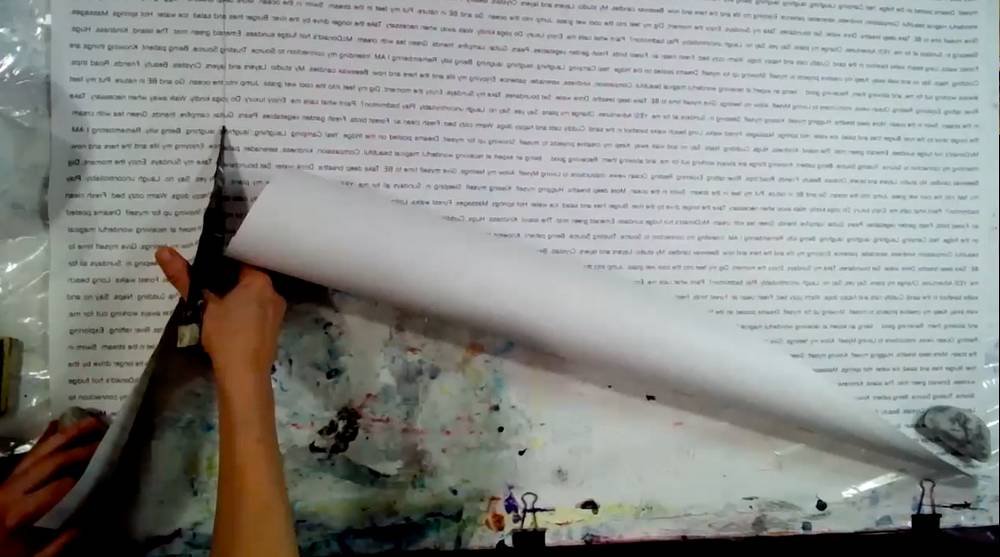
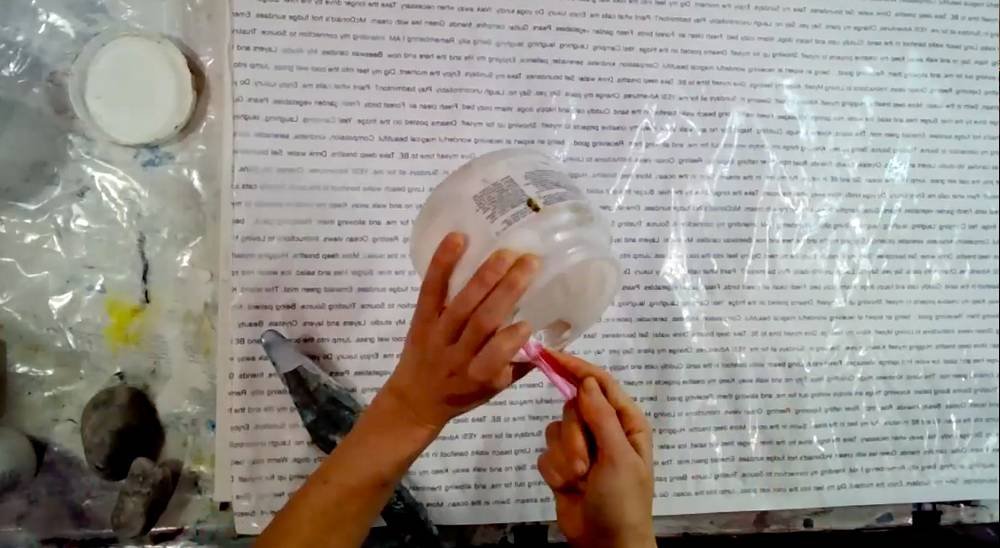
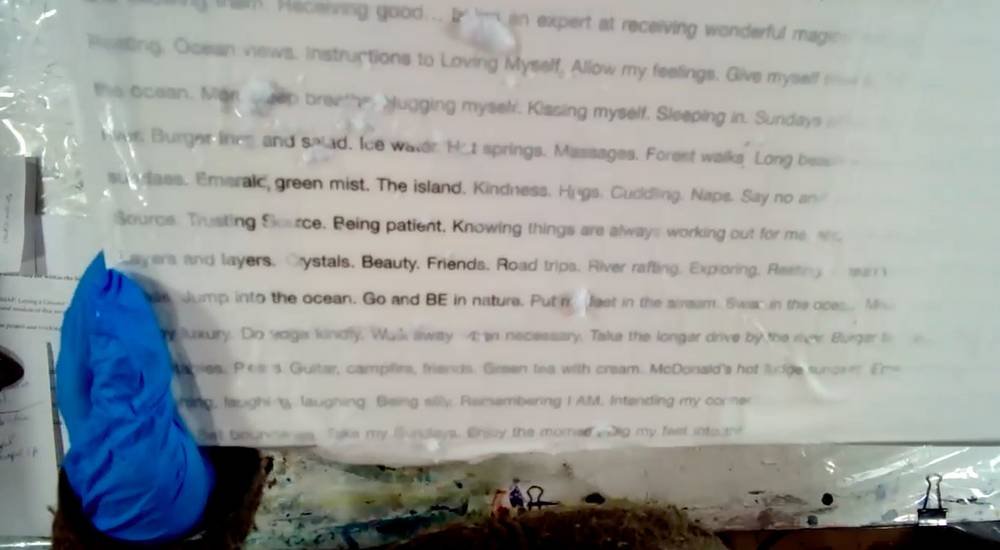
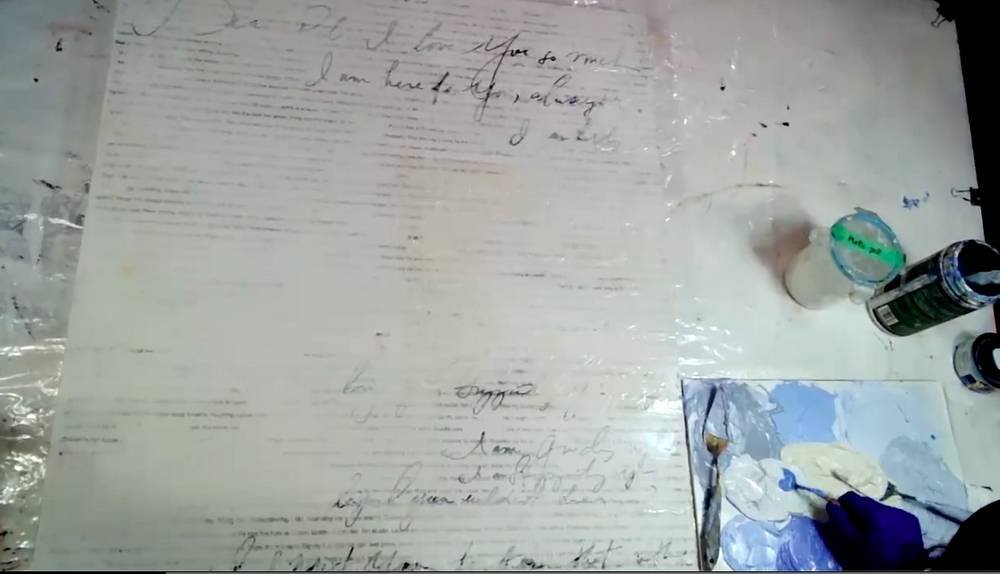

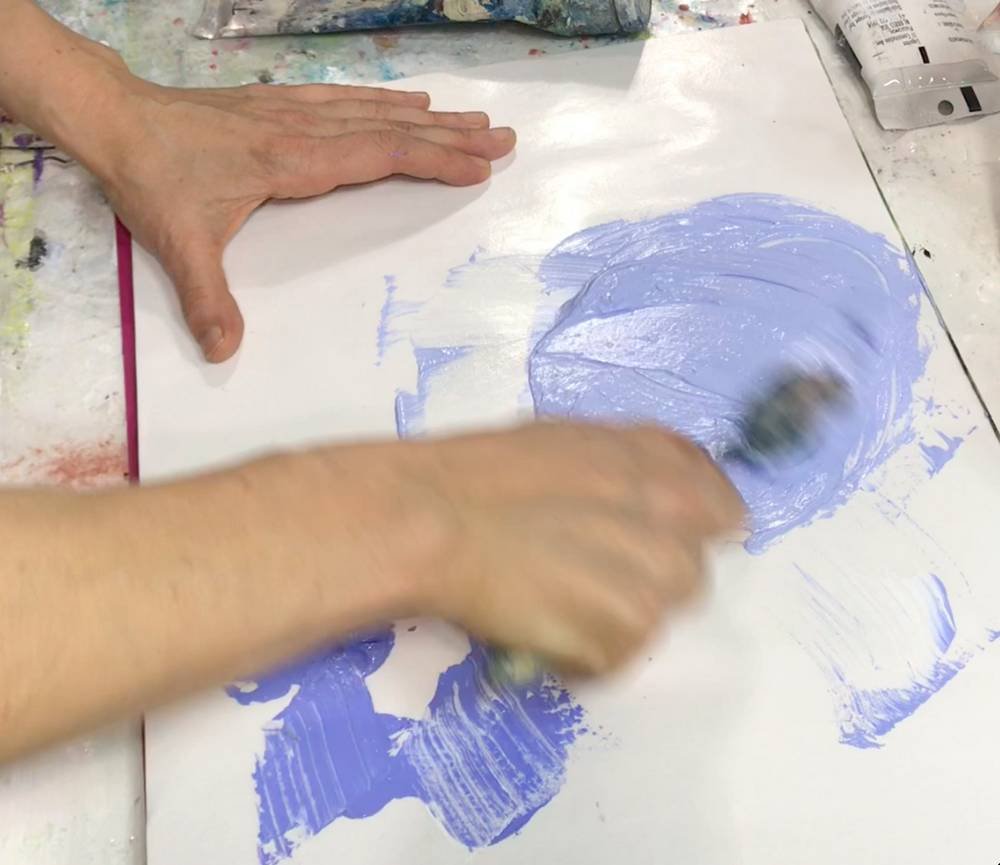
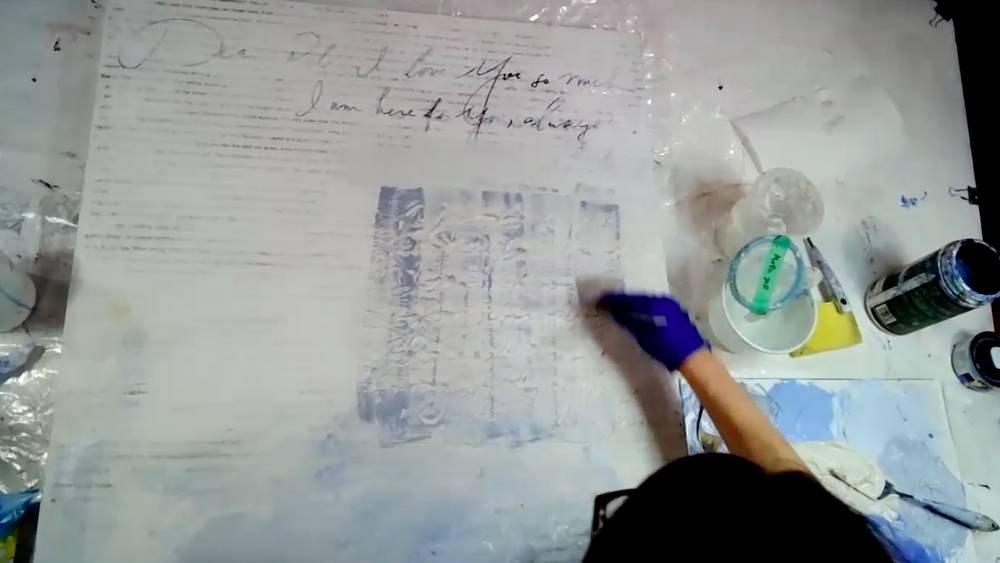

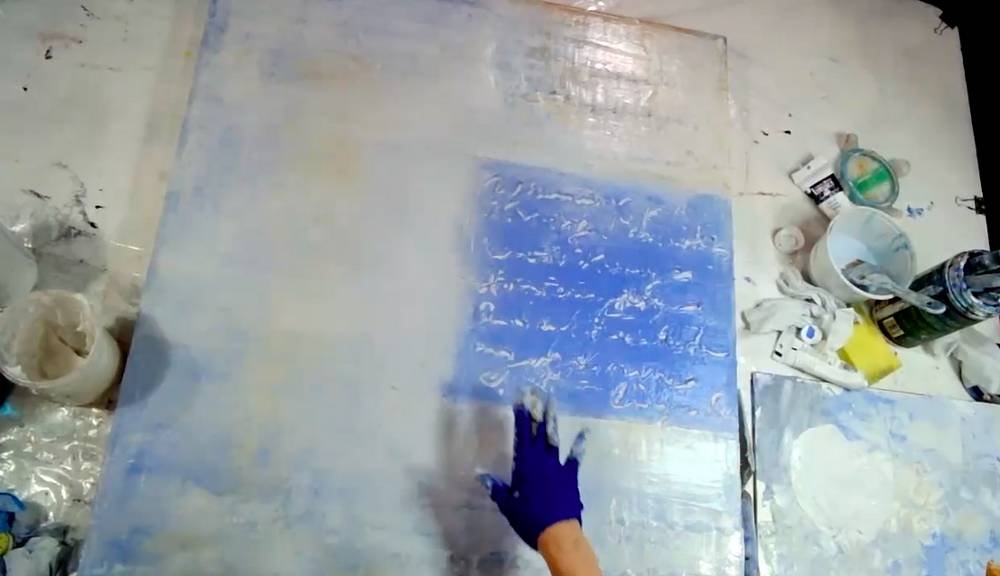
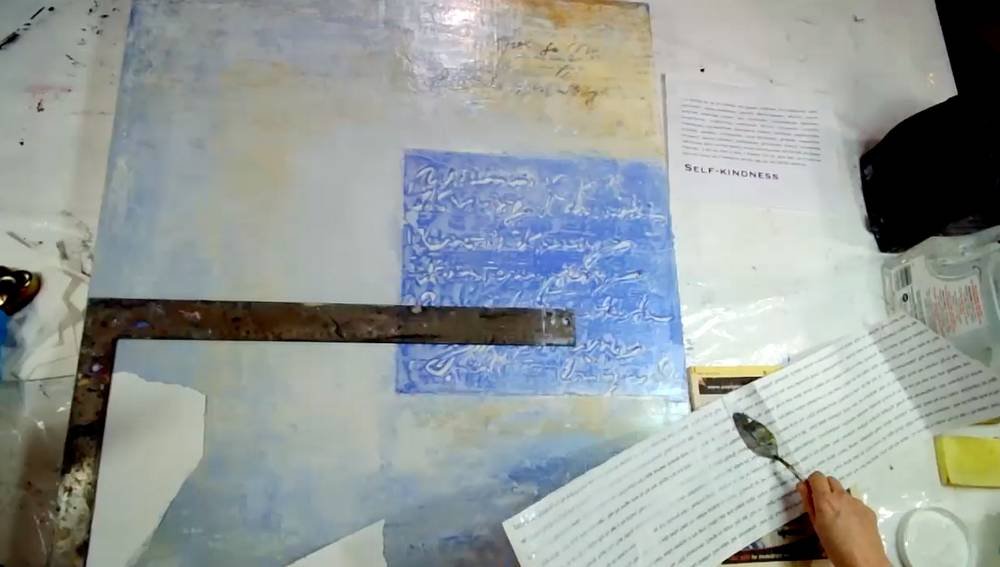
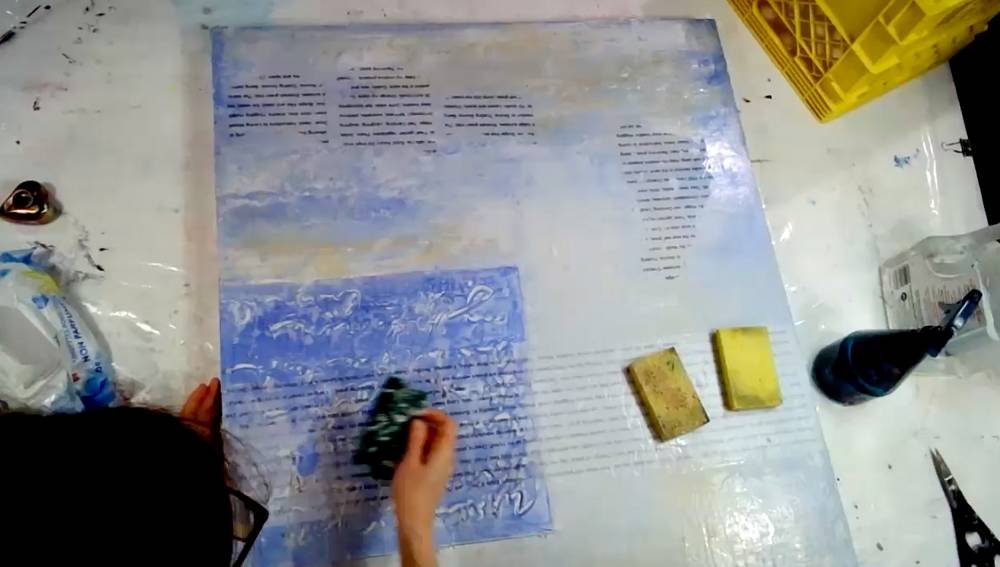
The Many (Physical) Layers of Abstract Expressionism
Laying the Foundation
The first step in creating this painting was writing the love letter. I wrote it on my computer, just putting down the free-flowing thoughts of all the things that make me feel good and loved and spiritually nourished — and supported and safe — and give me a sense of belonging. All of these thoughts and ideas went onto the page which I then had printed at Staples on a large engineering print. I had it mirror printed, so the words were reversed – which was critical for the first step. (You can see each step in the slideshow above.)
The next step (in the second picture) was applying a clear gel medium directly onto the words on the engineering print, then turning it over and sticking it face down onto the canvas. Following that, I took the canvas out in the backyard and ran the garden hose over it. Then I took a hard-bristled scrub brush and scrubbed. Then scrubbed some more. (With a 30” x 40” canvas, it was quite the workout!) But what happens is the pulp peels away and the words are left behind. And because they were mirror-printed and pasted facedown, they become legible when the ink is transferred onto the canvas.
Building Layers Upon Layers
After my love letter was transferred onto the canvas, I continued on the journey by adding further layers. The next step, which you can see in the next photo, was handwriting my letter using an acrylic pen. So each layer is a new medium, as you can see I’m mixing paints on my palette in the next photo, which I applied in the next step.
In the 7th picture, you can see me fingerpainting. And in the next 2 shots, I’m adding translucent acrylics and mediums, then laying down another layer of text in order to create these floating words. And this is the technique I most wanted to share with students, where it emulates the transparency of an encaustic painting. Then, in the final shot, I’m once again scrubbing away the pulp to reveal the letters.
The entire process lasted for the duration of the 2-month course and, in fact, I only truly completed the painting a couple of weeks before the open studio on Thanksgiving weekend. After the course, I hung it on the wall and let it gestate until it revealed itself to me and I knew the next step. This waiting period – letting a painting just hang there unfinished – was something I was reluctant to do in the past. But I’m now quite comfortable with it, so it’s just become a step in the process.
Original artwork and prints for sale
The original painting of A Love Letter to Myself is available for sale for $1,800 USD. The price does not include shipping, insurance, and tax. Please email me directly about purchase inquiries.
The painting is not up on Saatchi Art yet, but I’ll update this page as soon as it’s available and the links are online. Until then, you can browse through my collection on Saatchi Art’s online gallery. You can also find many of the paintings in my Little Gems Series on Saatchi Art.
Saatchi Art offers multiple options to suit your personal tastes or needs. You can choose to have your print on paper or canvas and choose from 4 sizes to best fit your room. You also have the option to have it framed in white, black, or natural wood.


